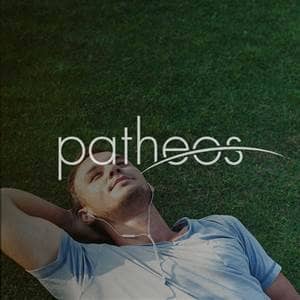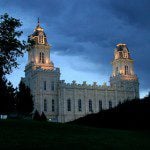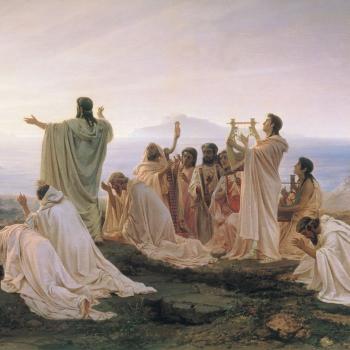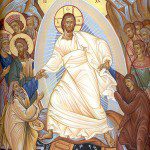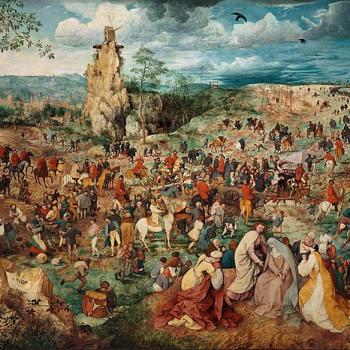
William Hamblin and I published the following column in Salt Lake City’s Deseret News back on 19 April 2014:
Historically, Easter has been the most important Christian holy day, as well as the oldest. Since the Reformation, many Protestant groups have simplified their Easter celebrations, focusing only on brief services on Easter Sunday itself.
For Roman Catholics and eastern Christians, however, the celebration of the crucifixion and resurrection of Jesus Christ is part of a complex of pilgrimage and ritual commemorations known as Holy Week.
Elaborate celebration of Easter had developed in Jerusalem in the early fourth century A.D., when the Christianization of the Roman Empire finally allowed widespread Christian pilgrimage.
Holy Week celebrations at Jerusalem evolved into a liturgical or ritual drama re-enacting the events of the last week of Christ’s life. The first detailed description of Holy Week rituals in Jerusalem comes from the account of the pilgrim Egeria, a French nun who visited Egypt and the Holy Land from 381 to 384. Although originally celebrated only at Jerusalem, Holy Week was soon adopted by Christians throughout the world, with special rites for each day of the week preceding Easter celebrated in local churches in imitation of the original practices of Jerusalem.
By participating in Holy Week, Christians commemorate and ritually participate in the Easter story. In a mystical sense, some contemplate the passion of Christ as if they had been there.
Palm Sunday is celebrated on the Sunday before Easter in commemoration of Christ’s triumphal entry into Jerusalem, when his followers, waving palm branches and shouting “Hosanna to the Son of David,” proclaimed him the Messiah. Thousands of pilgrims bearing palm branches follow the ancient route of Jesus’ triumphal entry still today.
The Thursday before Easter is known in English as Maundy Thursday, in commemoration of the Last Supper. The term “maundy” is derived from Christ’s washing of the disciples’ feet, when he gave a “new commandment” that they should “love one another as I have loved you” (John 13:34). The phrase “new commandment” is translated in Latin as “mandatum novum”; hence, “maundy” Thursday is the day commemorating the new “mandatum” or commandment. Vigil is also held in Gethsemane.
Good Friday is a day of fasting, abstinence and penance in remembrance of the crucifixion. In some Christian traditions, Good Friday and Holy Saturday are the only two days on which the Eucharist (the sacramental offering of bread and wine) isn’t celebrated. Services frequently include reading the story of the crucifixion and veneration of the cross, where believers ritually act as if they themselves were witnesses of the crucifixion. In Jerusalem, pilgrims walk the Via Dolorosa, the “Way of Pain,” where each event of Jesus’ passion is memorialized.
Holy Saturday commemorates the day when Christ’s body rested in the tomb, culminating in the evening, with the Paschal Vigil, in which many Christians attend midnight services in imitation of mourning outside the tomb of Christ and awaiting the resurrection. Although in English the Sunday of the resurrection of Christ is called Easter, in many European languages the name is derived from the ancient word for “Passover”: in Hebrew pesach and in Aramaic pascha — hence, the word “paschal.” This often includes the lighting of the paschal candle, symbolic of the spread of the light of Christ, and the believers’ acceptance of that light in their own lives.
In early Christianity, Easter was the preferred day of baptism for new converts, many of whom spent the paschal vigil on the night of Holy Saturday in preparation for their baptism on Easter Sunday morning, reflecting the symbolism of baptism as resurrection. The practice of 40 days of fasting before Easter is known as Lent, and seems to have begun as a preparatory period of these candidates for Easter baptism in imitation of the 40-day fast of Christ. In older traditions, the fast permitted only one small evening meal a day, requiring complete abstinence from meat, fish, eggs and milk products. It’s a time of penance, abstinence, alms-giving and special religious devotions.
Holy Week culminates with the celebration of Easter Sunday. Although specific forms of remembrance can vary widely among Christian denominations, all unite in joyous thanksgiving for the atonement and resurrection of Christ and in hopeful anticipation of the future resurrection of all mankind.
Unfortunately, in many modern secularized Western societies — where “holiday” has ceased to mean “holy day,” becoming instead merely a time for fun and recreation — the authentic significance of Easter, like that of Christmas, has been largely obscured by commercialization and indulgence.
Reposted from San Diego, California




